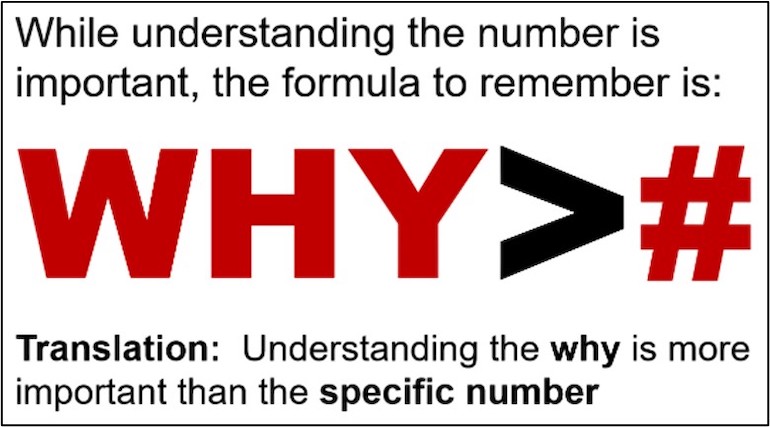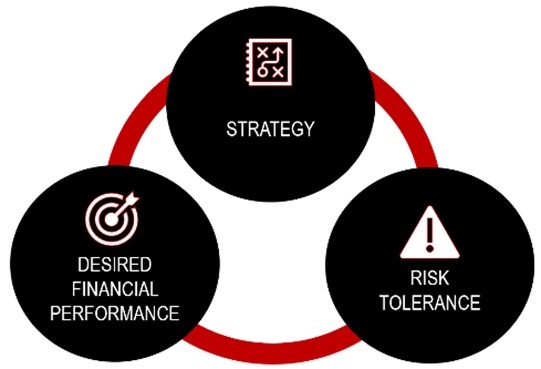3 minutes
When you think about how ALCO layers future possibilities atop the basic numbers to enable insightful, informed decisions, who’d want to skip it?
Asset/liability committee meetings are an opportunity to create compelling collaborations that are interesting, relevant, and result in better member value and better asset/liability management—plus put a check in the compliance box. If you’re not experiencing the first part of that sentence, it might mean you are thinking too much about where things have been rather than where things could potentially be—which is the fun part.

It’s important to understand where things stand, especially in relation to policy limits. Once that is established, moving away from reporting the numbers and using them as a springboard for anticipating what the future could look like is where things get interesting. But this is not just about making it interesting, it’s about engaging people from different areas—whether they’re “numbers people” or not—so they can contribute in meaningful ways. The numbers tell a story.
Here are some things to consider as you tell that story:
1. Every Financial Person Started Out as a Non-Financial Person

- ALCO meetings are an opportunity to include more voices in financial discussions. Financial discussions and member value are inextricably linked, so bringing non-financial people along in their comprehension of financial concepts and how they connect to the organization enhances the ALCO’s effectiveness.
- The involvement of people not in the numbers every day can create observations not yet discovered. Encouraging participants to push their thinking beyond their comfort zone will foster learning and bring new ideas to light.
2. Re-Imagine the ALCO Meeting
- Define the objectives for each meeting. Go beyond creating an agenda and articulate what the ALCO members should walk away with, such as awareness of a trend, specific decisions, robust conversations around a particular opportunity or risk, or good old- fashioned strategic thinking without the pressure of having to decide.
- Determine how the meeting time will be divided, including how much will be devoted to decision-making, education, emerging trends, strategic thinking, etc.
3. Get to the Point
- There is no need to read every number. Dashboards can help quickly cover the overall current state so you can move on to meaningful conversations about trends, events and situations that need attention.
- Use business intelligence to add depth to discussions. For example, if deposits are slowing, are there decreases in high-balance or low-balance accounts, or slower member growth?
- Focus on what the future may hold. For instance, as payments behaviors continue to shift due to technologies and high inflation, what trends is your membership showing and what could happen if that trend continues?
- Include relevant what-ifs to beef up the discussions. Changes in payments and deposit behaviors, interest rate changes and recessions can often be anticipated months before they show up in the numbers.
- Plan for the critical discussions that must be had. Encourage people to get out of their own lanes and participate. The ALCO’s decisions span the organization, and every member should be connecting those decisions to their impact in other parts of the business.

c. myers
4. Bring in Multiple Perspectives for Balance
- The ALCO’s purpose—bringing value to the membership consistently over time—needs to be top of mind.
- Consider both opportunities and risks when making decisions. Decisions to control risk or capitalize on opportunities rarely exist without trade-offs.
- Alignment with strategy is key. Connect the ALCO’s discussions and decisions to strategy.
ALCO isn’t just about the numbers themselves. The numbers are a reflection of everything the institution has been working toward. Loan balances, for example, are the culmination of the efforts of a vast array of employees from marketing to IT and beyond. If the numbers are a boiled-down version of all the employees’ efforts, combined with the environment, ALCO’s job is to take those numbers and layer on future possibilities in order to make insightful, informed decisions so the institution can thrive. When you think of it that way, who would want to miss out?
C. myers helps financial institution decision-makers uncover opportunities and continuously optimize their business models. Their depth and range of experience in linking strategy, talent, desired financial performance and successful execution enables them to work with their clients as strategic collaborators. They have the experience of working with over 600 financial institutions, including 200+ of those over $1 billion in assets. C. myers helps financial institutions think to differentiate and drive better decisions through strategic planning & business model optimization, strategic solutions and implementation, strategic leadership development, real-time ALM and financial forecasting, education, and thought leadership.





